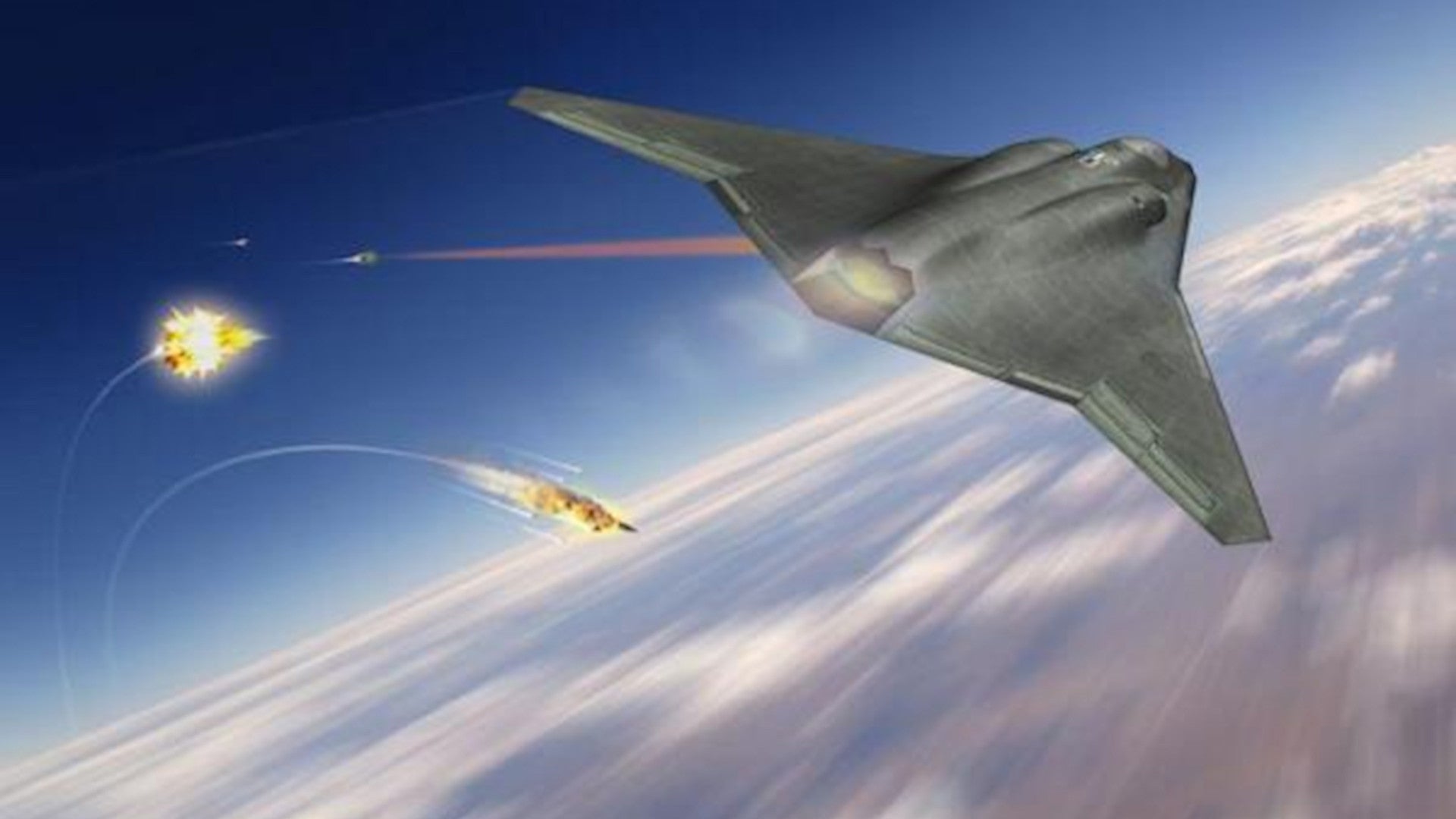The U.S. Air Force has revealed that a ground-based surrogate for a laser weapon system that could protect American fighter jets and other aircraft from incoming threats in the future has successfully shot down multiple air-launched missiles in a test. The service’s publicly stated goal is to have a podded prototype system ready for actual flight tests by 2021 and an actual operational capability by the end of the decade.
The Air Force Research Laboratory (AFRL) conducted the test on Apr. 23, 2019, at the U.S. Army’s White Sands Missile Range in New Mexico, together with defense contractor Lockheed Martin, which is developing the laser. Lockheed Martin first received the contract to build the directed energy weapon in 2017 as part of AFRL’s Self-Protect High Energy Laser Demonstrator (SHiELD) Advanced Technology Demonstration (ATD) program. The laser component, or Laser Advancements for Next-generation Compact Environments (LANCE), is just one part of the SHiELD effort. Work on a turreted mount and a self-contained pod to attach the complete system to a fighter jet-sized aircraft are separate as part of the SHiELD Turret Research in Aero Effects (STRAFE) and Laser Pod Research & Development (LPRD) projects, respectively.
“The successful test is a big step ahead for directed energy systems and protection against adversarial threats,” U.S. Air Force Major General William Cooley, head of AFRL, said in an official statement. “The ability to shoot down missiles with speed of light technology will enable air operation in denied environments.”
There’s a lot we still don’t know about this test, including any sort of details on the basic parameters, such as whether or not the operators manning the laser knew when and where the missiles above would get launched and at what altitude and under what atmospheric conditions. The Air Force also did not say what kind of missiles it had used and whether it intended them to be representative of any particular real-world threat. Still, demonstrating the ability of the laser to spot, track, engage, and destroy multiple aerial targets is still a very important step forward in SHiELD’s development.
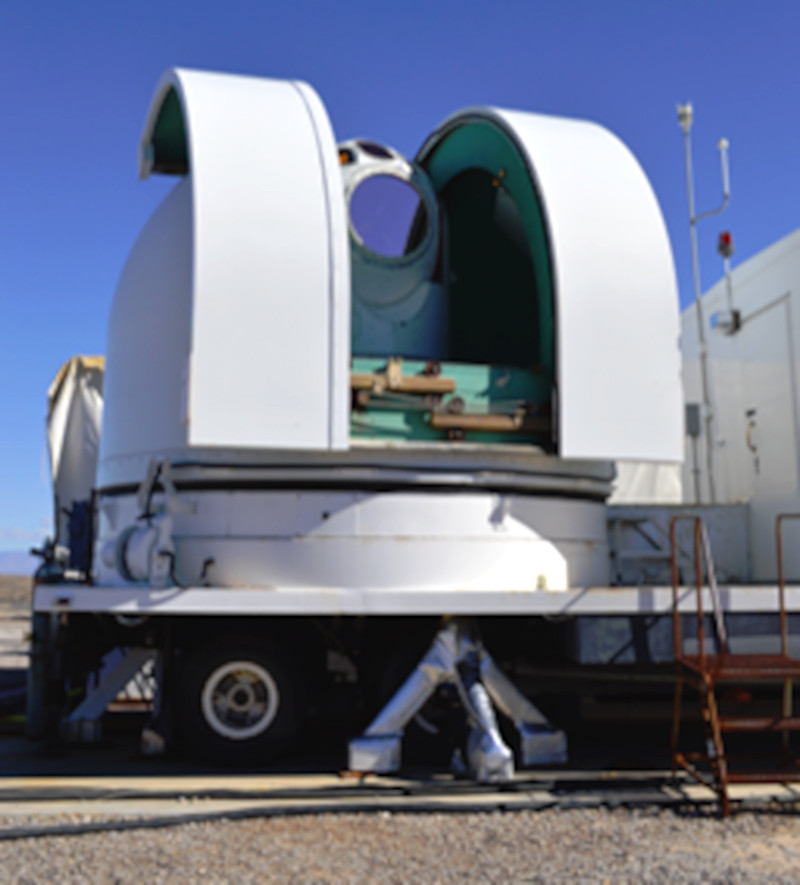
If the Air Force is employing a system capable of engaging multiple targets, they may be beyond the low power stage. However, at least as of 2016, the service did not expect the Phase II high power tests to involve a surrogate laser. The second phase was also supposed to mark the beginning of putting all the pieces of an actual prototype together for the first time. This schedule, of course, could have changed in the past three years.
The Air Force eventually wants SHiELD to be able to shoot down incoming air-to-air missiles, as well as surface-to-air missiles, providing an active defense for fighter jets during operations in high-risk environments. The service has already suggested, not surprisingly, that the system could also find its way onto larger, slower-moving combat and combat support aircraft, such as bombers, tankers, and transport planes, to mitigate the threat from ever-improving missiles cued by steadily more advanced radars and other sensors.
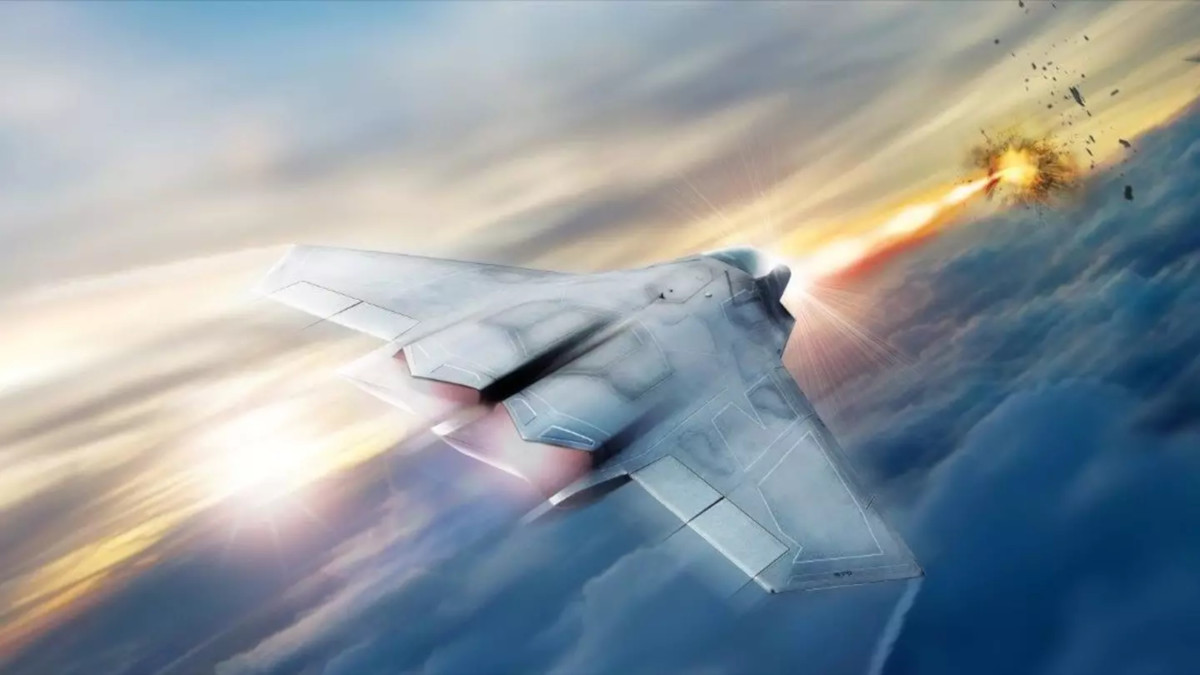
It’s not entirely clear where in the testing process the SHiELD program is based on this particular test. As of 2016, AFRL had broken the test plan into three distinct phases, according to a briefing The War Zone obtained via the Freedom of Information Act.
Though much of the document was redacted, it did show that Phase I was supposed to include both low-power ground testing, as well as low-power flight testing, both involving a surrogate laser, strongly suggesting that this is where the Air Force is in the process right now. You can see a partial description of the ground-based testing plan below. Air Force censors entirely redacted a detailed description of the Phase I flight tests.

With ground testing apparently proceeding as planned, we may not be far from the initial flight testing of the surrogate laser. We don’t know what platform the Air Force and Lockheed Martin might use for those tests, but the defense contractor did use a modified Dassault Falcon 10 business jet to carry a turreted laser for a previous program known as Aero-Adaptive, Aero-Optic Beam Control (ABC).
AFRL ran the ABC project together with the Defense Advanced Research Projects Agency (DARPA), which you can read about more here. In 2014, this experimental system demonstrated advanced adaptive focusing and stabilization capabilities. AFRL says that previous directed energy weapon projects, such as ABC, have already helped inform work on SHiELD, which will need the ability to automatically stabilize and control the beam’s focal point.
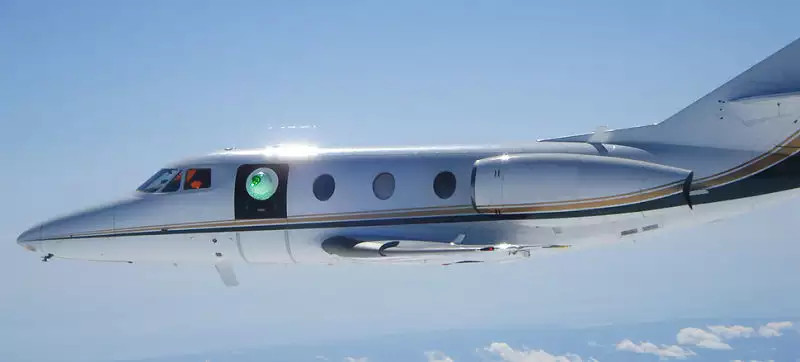
SHiELD will also need to be able to modulate its power to ensure that it has the best possible chance of neutralizing threats under any conditions. The range and power of lasers, as well as many other directed energy weapons, is highly sensitive to atmospheric conditions, including clouds and smoke, which can break up the beam.
With that in mind, it’s important to note that, apart from work on the laser, SHiELD’s first phase is also supposed to include the successful demonstration of “beam control, power, cooling, and system control in flight qualified pod.” Lockheed Martin’s contract announcement seemed to be focused largely on the laser component and it is unclear who might be developing the LPRD pod or the STRAFE turret.
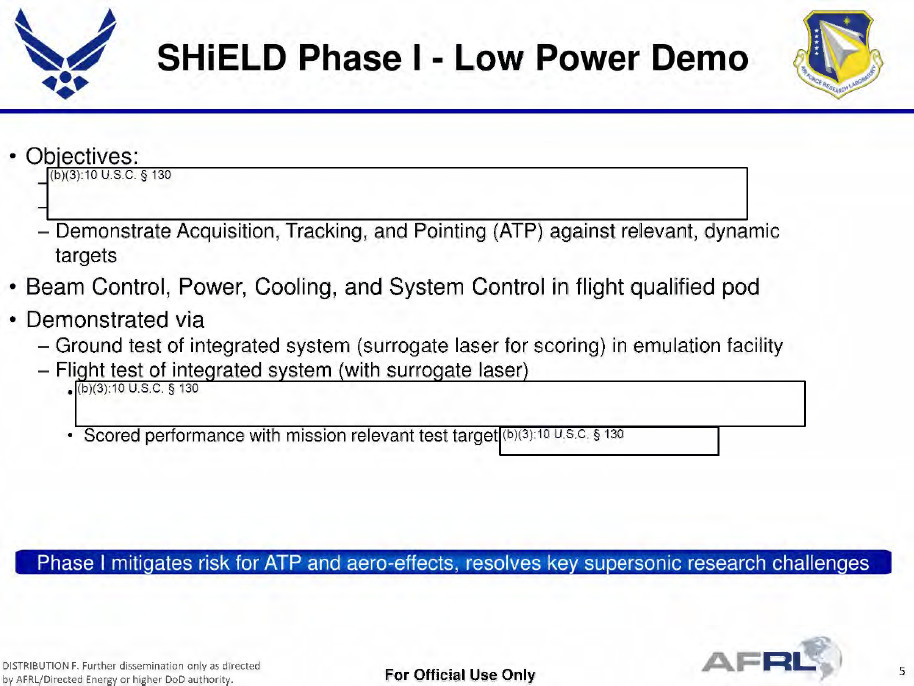
By the service’s own admission, the main challenge now is for Lockheed Martin to miniaturize the surrogate laser it is using now so that it will fit and work properly inside a reasonably sized pod.
But solid-state laser technology has been improving for years already. At the time of Lockheed Martin’s SHiELD contract award in 2017, the company had already delivered a 60-kilowatt laser to the U.S. Army for ground-based testing, as well. That same year, an Army AH-64 Apache gunship helicopter used a podded solid-state laser from Raytheon to destroy targets at White Sands. The U.S. Navy has also been actively developing laser weapons for its ships, too, and there have been numerous tests of laser weapons in the past two years across the services.

In addition, the Air Force has clear incentives to ensure SHiELD is a success. It’s hard to stress just how revolutionary a podded laser defense system would be for virtually any military aircraft. Unlike expendable countermeasures such as hot-burning flares or radar-blinding chaff, or electronic warfare systems, a laser weapon actively zeroes in on an incoming missile rather than simply throwing out some form of distracting noise to try to confuse the threat. A directed energy weapon also has an effectively bottomless magazine.
That’s not to say that SHiELD, at least as described presently, doesn’t have limitations. A turreted laser can only ever engage one target at a time and there is the aforementioned risk of atmospheric disruptions reducing the beam’s range and efficacy. Any future laser missile defense system is likely to just be part of a layered self-protection suite on future aircraft that could include a mix of other advanced options, including improved electronic warfare jammers, towed decoys, hard-kill interceptors, and more.
There’s really no reason why SHiELD, or a derivative thereof, could not be used in an offensive role during within visual range air combat against other actual aircraft or as an air-to-ground weapon against soft targets. A defensive podded laser weapon could also serve as a starting place for a purpose-built offensive system, too.
In October 2018, AFRL announced it was looking for companies that might have proposals for a high-energy laser or high-powered microwave directed energy weapon for “precision airborne offensive strike” missions, as well as defensive roles, separate from the SHiELD effort. In addition, the Air Force Special Operations Command (AFSOC) had been talking about adding an offensive laser capability on its AC-130J Ghostrider gunships by 2022, though it appears that this timeline has gotten pushed back.
If everything stays on schedule, the Air Force is still around two years out from demonstrating a full prototype of the podded SHiELD system on a fighter jet-sized aircraft. But this latest test at White Sands shows the program is on track to making this game-changing capability a reality.
Contact the author: jtrevithickpr@gmail.com
